If you’re looking to transform your garden into a place of luxury, relaxation and entertainment, you’re going to need a reliable decking solution to get you started.
Now:
For a long time, traditional timber decking was the default choice.
In recent years, though, composite decking has been growing in popularity.
The question is:
Which composite deck is best?
To help you make an informed decision, at Roofing Superstore we decided to put together a comprehensive guide exploring the ins and outs of the latest modern composite decking ideas.
Without further ado, let’s dive right in.
Table of contents:
- What is composite decking?
- Composite decking types
- Composite decking prices
- Composite decking regulations in the UK
- What is the downside of composite decking?
- What is the best composite decking in the UK?
What is composite decking?
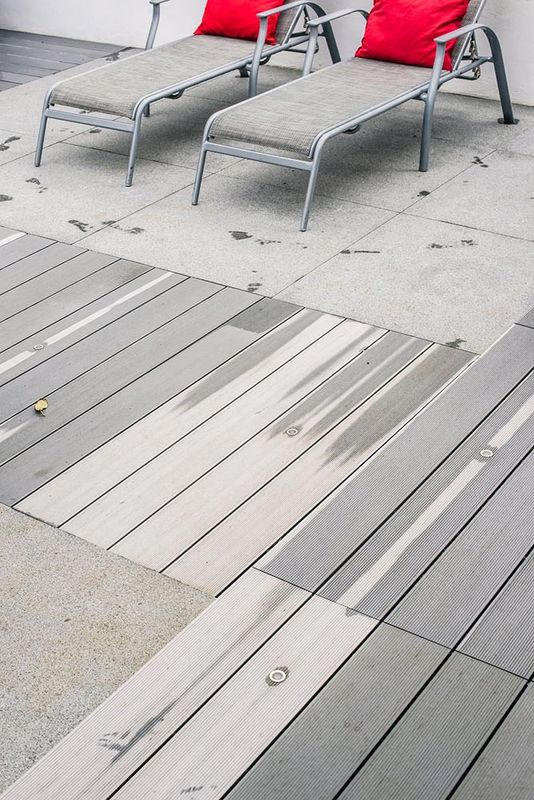
Composite decking is an exciting, low-maintenance alternative to traditional wood deck material which first gained prominence in the 1990s. Typically, it consists of recycled wood fibres and plastic, making it highly sustainable and environmentally friendly.
What’s more:
Composite decking comes with plenty of additional benefits.
To begin with, it’s a finished product, so you don’t have to prime or paint it – all you have to do is choose an appropriate colour to match your surroundings and overall vision. Additionally, unlike timber decking, composite decking is highly resistant to rotting, splintering or warping. So, it’s likely to last longer, ideally around 25-30 years.
Crucially, it has excellent slip resistance, which means your deck will be a much safer place in wet weather conditions.
Last but not least, composite decking is easy to install, making it a convenient solution for most homeowners and DIY enthusiasts.
Composite decking types
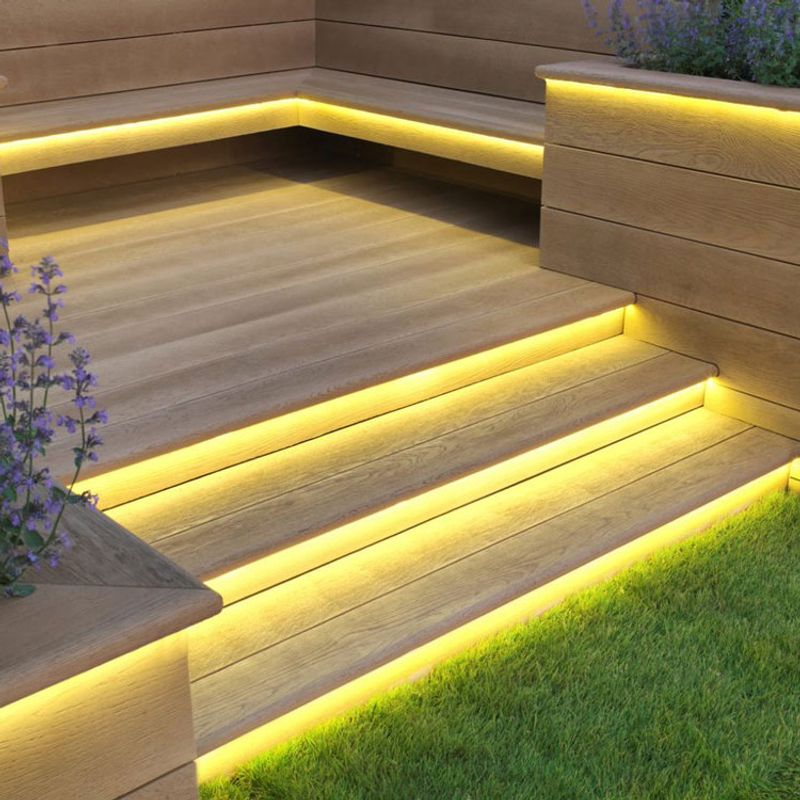
In addition to having plenty of advantages, wood composite decks are highly versatile and come in different types and styles.
Let’s take a closer look at the main options you can choose from.
Uncapped composite decking
Uncapped composite decking boards, also known as first-generation composite decking, are cheaper than the more recent offerings. Because they’re not protected, much like timber decking, they will absorb a small amount of moisture and experience various weathering effects over time, such as fading from UV rays.
That being said:
Uncapped composite decking boards can still last up to 25 years when given proper maintenance. In addition, they provide a more natural, timber-looking feel than capped ones.
Capped composite decking
Usually referred to as second-generation composite decking in the industry, capped composite decking boards feature a thin, roughly 0.5mm-1.6mm cap or veneer which protects the composite underneath from the elements and ensures its greater longevity and durability.
As a result, capped products are more expensive than uncapped ones and don’t feel as much like traditional wood due to the somewhat artificial sheen of the cap. On the upside, they’re virtually maintenance-free, have a longer service life and won’t absorb any water.
But wait! There’s more:
It’s also possible to find partially capped decking. This hybrid solution is usually capped on the top and sides and uncapped on the bottom to allow the composite to expand and contract without any potential damage.
Solid composite decking
Solid wood alternative decking boards are easy to manufacture and extremely sturdy and durable. So, they’re best suited for commercial applications where the boards will have to handle plenty of traffic.
On the downside, they’re quite expensive as well as heavier and more difficult to install. They also have a greater tendency to shrink and expand due to moisture.
Hollow composite decking
Hollow composite decking boards feature internal grooves, which can be used to fit things like cables. They’re more lightweight than solid boards, as well as cheaper and easier to fit. In addition, hollow boards are less susceptible to shrinkage and expansion.
On the other hand, hollow boards are at a greater risk of structural damage, especially if they have to support heavier furniture and/or constant heavy traffic.
To summarise, you get to choose from four main options, namely:
- Uncapped hollow decking
- Capped hollow decking
- Uncapped solid decking
- Capped solid decking
One of the main differences between these decking composite wood types is the cost. And that’s exactly what we’re going to zoom in on next.

Composite decking prices
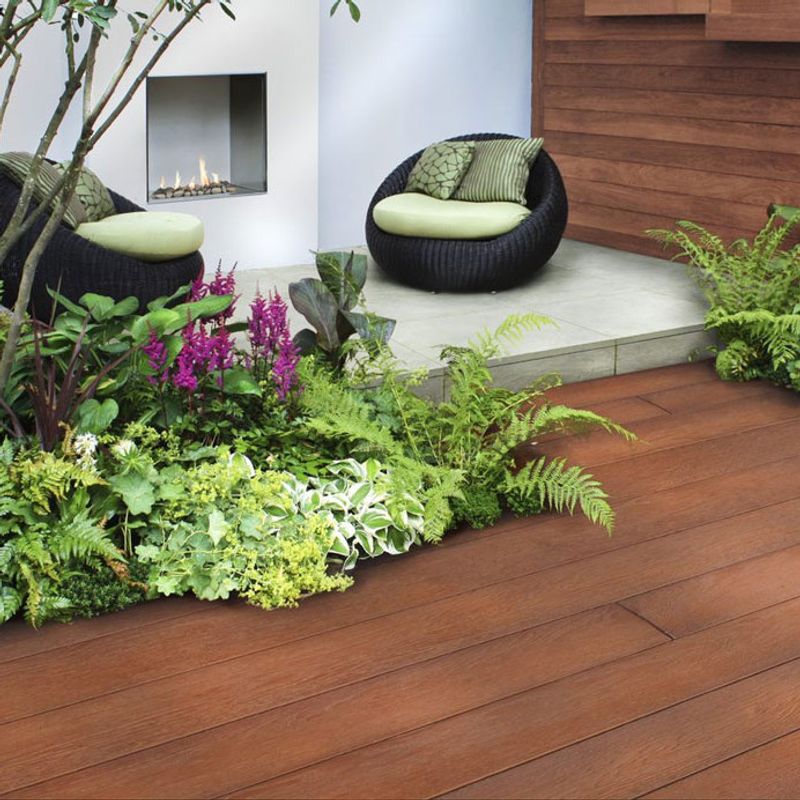
As we’ve mentioned in passing, the price of composite boards can vary considerably depending on the styles of decking.
The good news is:
Technological advancements over the past few years mean that even first-generation, uncapped composite decking boards are a lot more reliable than they used to be 30 years ago.
So, the first thing you need to do is measure the size of the area you intend to convert into decking and decide on a budget. Then, you can start crunching the numbers.
Here are some rough figures to give you a head start:
First of all, you can expect to pay anywhere between £35 and £70 per square metre for composite decking boards, depending on type and brand.
Second of all, depending on the nature of your project, you might have to factor in the cost of additional items, such as fixings, skirting, corner trims, joists and weed mats. Based on the size and composite decking material, you can expect to fork out somewhere along the lines of £400-£1000.
Third of all, there are the installation costs. If you’re a seasoned DIYer and intend to take on the task by yourself, all you need to consider are the tools you’ll need (which you probably already have in your shed anyway) and how much time you’ll have to set aside (typically, between one and three days).
But if that’s not the case, and you intend to hire a professional, be prepared to spend around £50 per square metre.
All in all:
Be prepared to spend around £125–£200 per square metre of composite decking. This figure includes the labour costs.
Composite decking regulations in the UK
If you’ve made it this far, you should have a pretty good idea of how to select composite decking for your garden.
But don’t go rushing off just yet!
Before making any purchase, you have to familiarise yourself with the relevant decking regulations and ensure you’re not violating them.
As garden decks are considered ‘permitted development’, you don’t need planning consent from your local council.
However, there are certain limitations. The general ones for England and Wales are as follows:
- The decking does not extend more than 30cm above ground level.
- The decking, alongside outbuildings, extensions and other platforms, does not cover more than 50% of the entire garden area.
- The decking does not extend to land forward of a wall which forms the principal elevation.
In certain specific circumstances, there are additional limitations. These are:
- On land located in National Parks, Areas of Outstanding Natural Beauty, the Broads or World Heritage Sites, decking covering an area more than 20m from the house cannot be larger than 10 square metres.
- No decking is allowed on either side of a house located on Article 2(3) Designated Land or around a listed building.
For more information about relevant Planning Permission and Building Regulations in your area, make sure you visit the Planning Portal.
What is the downside of composite decking?
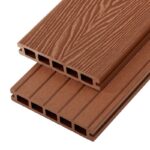
We’ve spent quite a bit of time extolling the virtues of the artificial deck and the composite patio – and with good reason!
Still, you might be tempted to ask whether composite decking has any drawbacks. And while there aren’t all that many of those, we shouldn’t simply imagine them away.
With that in mind, here’s what you need to take into account:
Higher initial cost
Composite wood for decking is relatively more expensive than 100% timber decking. So, your initial outlay is going to be higher. On the other hand, that higher upfront cost will more than repay itself over the long run through greater longevity and lower maintenance costs.
Not as authentic looking
Even though composite decking is made in part from recycled wooden fibres, it’s not a natural product. This means that, at the end of the day, these boards will never have the same authentic wooden feel as timber boards.
What’s more:
You can’t paint composite decking – which means that you have to be extra careful when choosing the colour and make sure you get it right the first time!
Could become hot in summer
Because composite decking contains plastic, it might become extremely hot in summer. While extended scorchers are not something most of us in the UK have to deal with on a regular basis, you should nevertheless consider cooling devices, such as garden parasols and rugs.
All of which brings us rather nicely to the $64,000 question, namely:
What is the best composite decking in the UK?
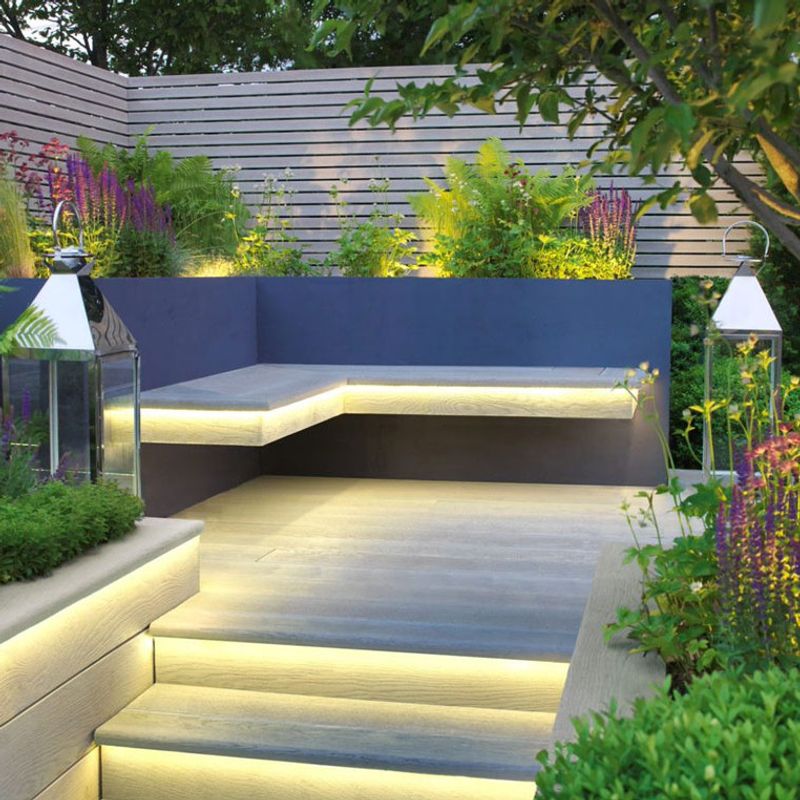
As more and more UK homeowners are waking up to the advantages of composite decking, the number of outstanding offerings on the market continues to grow.
In turn, greater variety has resulted in better overall quality and a blossoming of modern composite decking ideas. So, given the excellent state of the market right now, it would be presumptuous to single out any one supplier.
That being said:
It’s a safe bet to state that pretty much any second-generation composite decking from a renowned brand would make a sound investment.
At the end of the day, the best composite decking is the one that best suits your unique needs and requirements, whether those are specific composite deck patterns, colours, styles, makeup or something else altogether.












